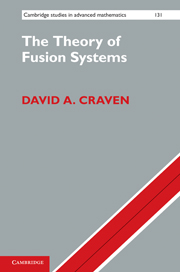4 - Fusion systems
Published online by Cambridge University Press: 05 August 2012
Summary
In Chapter 1, we were briefly introduced to the definition of a saturated fusion system, which perhaps did not seem particularly natural or easy to follow at the time. Here we will give a simplified definition of saturated fusion systems, not involving fully normalized subgroups, but focusing on how maps extend. It is hoped that this new definition, due to Roberts and Shpectorov [RoS09], is more intuitive than the previous definitions, due to Puig [Pui06], Broto, Levi, and Oliver [BLO03b], and Stancu [Sta06]. (Note that they are all equivalent.)
Because the previous ‘standard’ definitions appear throughout the literature, and the concepts involved in these definitions are important in the subject, we will introduce the notions of fully normalized and fully centralized subgroups in Section 4.2. Here we will start proving our first theorems about fusion systems, and saturated fusion systems in particular: saturated fusion systems offer the structurally rich definition necessary for a satisfying theory to be developed.
Section 4.3 sets out to prove the equivalence of the different definitions that abound in the literature. One aspect of this array of possible definitions is that some are easier to use in different situations, and so it can be helpful to have these different definitions to hand: proving that a fusion system is saturated might benefit from a simpler criterion, whereas proving that a fusion system isn't saturated could use one of the more a priori stronger conditions.
- Type
- Chapter
- Information
- The Theory of Fusion SystemsAn Algebraic Approach, pp. 93 - 133Publisher: Cambridge University PressPrint publication year: 2011

